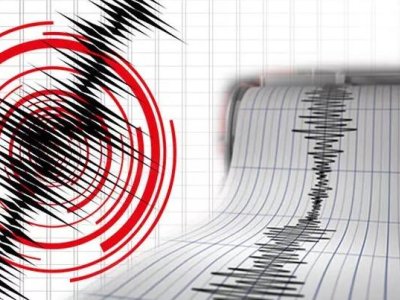Tehran's Modern Calamity: “We can't breathe”

Iran is one of the most discussed countries in the Middle East today. Its rich energy resources, geopolitical position, and tense relations with the West keep it constantly on the international agenda.
The war with Israel in the middle of this year, and the missile strikes on Iranian cities, including Tehran, have placed the country at the center of world news. These events demonstrate both Iran's regional role and the vulnerable position of its capital, Tehran.
From protests in the streets of Tehran to negotiations surrounding its nuclear program, every detail shakes the global agenda. Therefore, understanding Iran, especially the fate of Tehran, considered its heart, means understanding both the region and the world.
This edition of Modern.az's column, “Modern Woes of an Ancient City,” is dedicated to the Iranian capital, the city of Tehran.
Tehran is not only the political center of Iran but also a cultural treasure carrying the legacy of centuries. Here, alongside royal palaces from the Qajar Turkish era, there is also the Grand Bazaar of Tehran, considered one of the oldest and largest markets in the world. Wandering through the narrow streets of the bazaar, it is possible to simultaneously feel the spirit of the Middle Ages and the hustle and bustle of modern Tehran.
This heritage, showcasing the richness of Eastern culture, also faces the threat of disappearing under the pressure of a rapidly expanding metropolis. The demolition of old neighborhoods and the construction of multi-story buildings in their place are erasing Tehran's memory.

"We can't breathe"
Tehran is known today as one of the most polluted cities in the world. Traffic congestion, old industrial facilities, and low-quality fuel poison the air. The city's geography further exacerbates the problem. In the capital, located at the foot of the Alborz Mountains, cold air layers “trap” pollution near the ground, and dusty air does not disperse for a long time.
International studies also confirm how dangerous the situation is. A study published on the “ScienceDirect” platform notes that for 16–34 percent of the year, Tehran's air reaches hazardous levels for health. More than 80 percent of pollutant emissions are attributed to vehicles. A report prepared by "Reuters" emphasizes that during winter months, when temperature inversion occurs, the capital is completely engulfed in dust. World Bank reports indicate that this situation not only harms people's health but also causes serious damage to the country's economy.
City residents feel this reality in their breath every day. “Every morning when I wake up, it becomes difficult to breathe,” says 32-year-old Tehran resident Leyla. “Especially towards morning, it's as if a wall of smoke stands before us. Children cough frequently, and the elderly are reluctant to leave their homes.”

No room to set foot
Tehran is a rapidly growing giant city, but neither its roads nor its public transport can keep pace with this growth. As the population increases, traffic jams worsen, metro congestion reaches unbearable levels, and daily life turns into a tiring struggle.
Figures clearly illustrate the scale of the situation: Tehran's metro currently has a 179-kilometer network and transports approximately 2.5 million passengers daily. However, this is not enough to meet the city's demands. 72 percent of journeys are made by private cars, resulting in an average travel speed of only 15 km/h in central streets during peak hours. This leads to both time loss and increased fuel consumption.
Although roads are being expanded, the number of cars is increasing even faster, and the transport system in newly built neighborhoods does not meet needs. Rising energy consumption is another aspect of the problem; fuel burned by idling cars, diesel consumed by old buses, and electricity loss impose an additional burden on both the economy and the environment.
Thus, Tehran gives the impression of a metropolis “with no room to set foot.”

Life without water...
Tehran's water supply is in a state of decline. The water levels of the city's main reservoirs - Lar, Latian, Mamloo, Taleqan, and Karaj (Amir Kabir) - have fallen to historic lows. For example, the Karaj reservoir currently holds only 7–12 percent of its capacity. In 2024–2025, precipitation levels were 40–50 percent below the norm.
Along with reduced precipitation, the replenishment of water sources has also become difficult. Water scarcity has necessitated excessive use of groundwater resources. This, in turn, has led to land subsidence. In some regions, this subsidence reaches up to 20–30 cm annually. Such uncontrolled use of groundwater not only disrupts the natural balance but also poses a threat to infrastructure and buildings. Furthermore, the daily water consumption of the capital's residents is significantly higher than the norm, and this trend continues.
Among the main causes of this crisis are climate change, long-term drought, inefficiency in management, and the aging of water infrastructures. Reservoirs for collecting and storing rainwater have become filled with sediment, reducing their effectiveness. The number of illegal wells has increased, and the water use control system has weakened. Population growth and the demand for water in agricultural and industrial sectors also deepen the crisis.
In recent years, the amount of rainfall in the Tehran region has been significantly below long-term average indicators. According to conducted research, at the beginning of 2025, precipitation was approximately 42% less than the long-term average.
Tehran's environmental problems are no longer purely natural phenomena but issues of governance, politics, social justice, and planning. If timely and systematic measures are not taken, these problems could render the city uninhabitable.

Two faces of the city...
Tehran, with a population of over 15 million today, is one of the largest cities in the Middle East. However, this vastness simultaneously leads to a more pronounced visibility of social inequalities. Expensive apartments, luxurious shopping centers, and high-level services are concentrated in the city center. Yet, in the outer neighborhoods, poverty, unfinished buildings, and illegal constructions transform human life into an entirely different scene.
According to research, some of the rapidly growing neighborhoods around Tehran have been built without proper documentation. Here, neither water, nor sewage systems, nor modern infrastructure are sufficient. People are forced to live not in the attractive city center, but in remote and underdeveloped areas.
Tehran's hidden fear
Tehran also lives with an invisible danger. The city is located in a major seismological zone, and scientists have been stating for years that the capital could face strong underground tremors at any moment.
Rapidly increasing urbanization makes this risk even more dangerous. In recent years, hundreds of new residential buildings have been constructed around the capital, but not all of them meet seismic standards. The population density is so high that in the event of a strong earthquake, the scale of the consequences could be catastrophic.
Consequently, Tehran today is a city of contradictions; on one side, a rich history preserved by palaces and bazaars, and on the other, dusty air, traffic jams that paralyze movement, and a social chasm. Rapid population growth, overburdened infrastructure, and uneven development confront this ancient capital with even more severe problems. Moreover, the risk of an earthquake could add another catastrophic page to this entire picture at any moment...
-
00:54, Bu günİmamoğlu interrogated for 3 hours in espionage case
-
00:24, Bu günWill there be a coup in Russia? - Putin is concerned
-
26 October 2025, 23:55A Chinese car turned to ashes in a few seconds - INSTANT FOOTAGE
-
26 October 2025, 20:51An earthquake was felt in Istanbul - BREAKING NEWS
-
26 October 2025, 20:29"Galatasaray" won
-
26 October 2025, 19:44Is Trump coming to Baku?
-
26 October 2025, 19:16Russia's nuclear weapon ACTIVATED
-
26 October 2025, 18:58Flights at these airports in Russia suspended
-
26 October 2025, 18:13Fighting intensifies in Sudan - Army headquarters captured
-
26 October 2025, 17:16Starmer to Turkey will visit
-
26 October 2025, 16:55Ships collided off the coast of China - 2 people went missing
-
26 October 2025, 16:43A good deal could be made with China - Trump
-
26 October 2025, 16:19An earthquake occurred in Turkey
-
26 October 2025, 15:48They will see a female president in the White House - Harris
-
26 October 2025, 15:19Russia's response will be tough - Peskov
-
26 October 2025, 14:27Azerbaijan is ready to allow this - Overchuk
-
26 October 2025, 13:58The leader of the Crimean Tatars buried his son
-
26 October 2025, 13:05Trump: I like to stop wars
-
26 October 2025, 12:22The history of a picture - The most talked-about rivals of the art world - Flora and Ilhama
-
26 October 2025, 11:50PKK from Turkey completely WITHDREW
-
26 October 2025, 09:21Drone attack on Kyiv - 26 injured
-
25 October 2025, 22:38In Russia among migrants MASS BRAWL
-
25 October 2025, 17:32Orban prepares for a visit - Ukraine is on the agenda
-
25 October 2025, 17:19Vahid Alakbarov lost 1 billion in 2 days
-
25 October 2025, 16:31The chief editor of “Sputnik Azerbaijan” also left Baku
-
25 October 2025, 14:27The UN's legitimacy is in doubt - Reforms are necessary!
-
25 October 2025, 13:26Pashinyan will go to Kazakhstan
-
25 October 2025, 12:29In the government of the Far East's first female leader TURKISH OFFICIAL
-
25 October 2025, 11:59“Typhoon” destroyed its target with precision - REAL-TIME FOOTAGE
-
25 October 2025, 11:54A 1-year mourning declaration in this country was made

















































